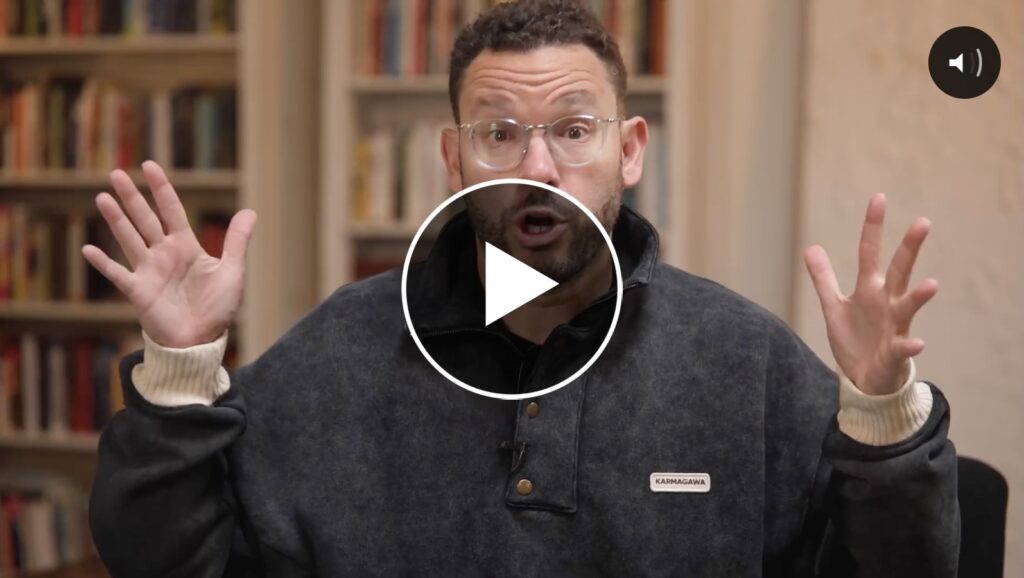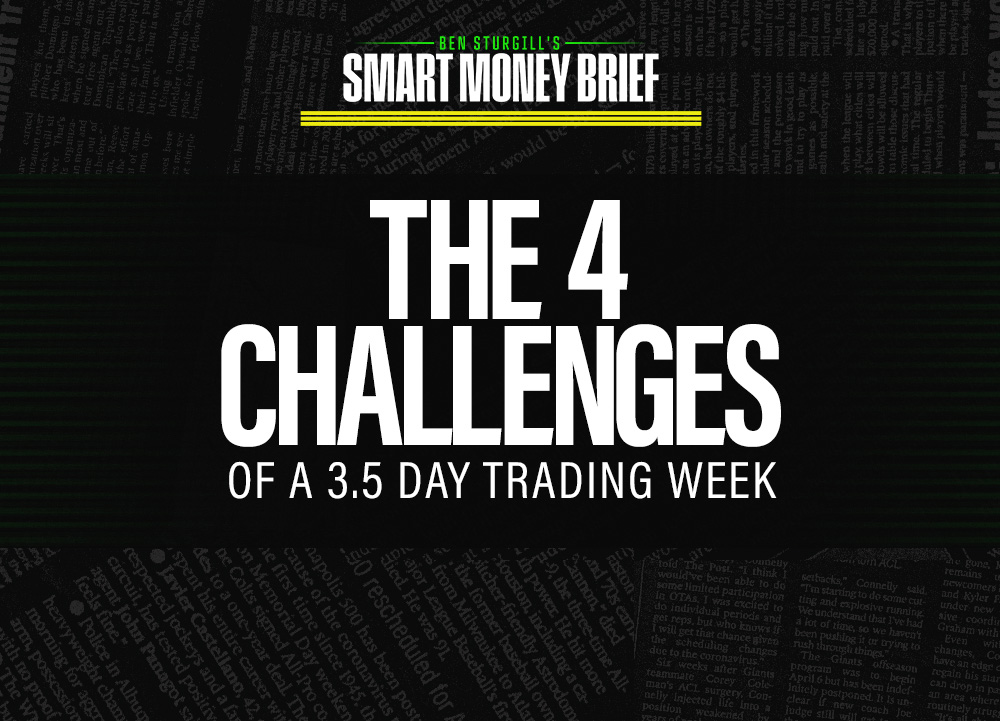Good morning, traders…
This isn’t a normal week in the stock market.
The market is closed on Thursday for Thanksgiving, then closes at 1 p.m. EST on Friday.
I’ve got one piece of advice for the 3.5-day trading week:
“Keep it simple, stupid.”
And I say that last part with love.
Tim Sykes is a perfect example of this mindset.
He isn’t looking at dozens of different factors before placing a trade.
He isn’t caught up in every tiny market fluctuation.
He’s not jumping from one strategy to the next, adding more and more rules to make things “perfect.”
He does one thing, does it well, and sticks to it.
At a recent in-person event I hosted alongside Tim, students asked him about dozens of different indicators, techniques, and strategies:
“What about this?”
“Nope, I don’t worry about that.”
“Well, have you considered adding this?”
“Nope, this is what I do.”
“Wouldn’t it be better to also include…?”
“Nope.”
Tim knows what works for him and sticks to it.
He’s downright religious about his strategies, patterns, and execution.
That’s why he’s made $7.9 million trading and helped more than 31 other people become millionaire traders, too.*
There’s an important lesson in this: traders tend to overcomplicate things.
They jump from one strategy to another, second-guess their plans, and consider too many factors before making a decision.
They think they need more information and more confirmation…
But in reality, “more” of these things usually just lead to “more” problems for traders…
More indicators? More confusion.
More setups? More opportunity cost.
More analysis? More second-guessing.
The market already has enough uncertainty. If you’re constantly throwing more at your trades, you’re just adding to your own confusion.
If any of this sounds familiar, it’s time to get your notepad out…
The O.I.A. Method
How do we cut out the unnecessary complexities of the options market and focus on what really matters?
I’ve used The O.I.A. Method for years:
- Observe – Look at what’s happening. What’s the price action telling you? Is there Smart Money flowing in?
- Interpret – What does it mean? What news could disrupt the setup? Is this trade worth taking based on your plan?
- Apply – Take action based on your process. If it fits, execute. If it doesn’t, move on.
Focus on what’s important, filter out what’s not, and take action accordingly.
To win consistently in trading, you need a repeatable process that gives you an edge.
For me, the process starts with following the Smart Money…
My Repeatable Smart Money Edge
If I see millions of dollars flowing into one specific options contract, that’s not some random Robinhood trader…
It’s a whale making an informed bet.
And that whale almost always knows something we don’t.
Then, I move to the chart. If I can connect the Smart Money flow to a reliable chart pattern, that’s confirmation.
Once I get that confirmation, I set price targets and stop-losses, then execute the trade with as little emotion as possible.
How do you think I bagged these massive peak gains last month?
- +159% in 2 days on MRK*
- +49% in 1 day on GOOGL*
- +64% in 2 days on EOSE*
- +244% in 1 day on PYPL*
By trading with the whales, not against them.
1. I start with Smart Money flow. I track unusual options activity, large sweeps, and open interest to see where institutions are positioning.
2. I look for pattern recognition. VWAP pullbacks, support at key EMAs, or breakouts from consolidation. The chart must show a clear structure with an identifiable pattern.
3. I confirm with multiple timeframes. What looks clean on the 5-minute chart must align with the daily and weekly structure.
4. I define the trigger. A specific price level that confirms the setup. I set alerts at that level, define my stop-loss, and wait.
5. I enter only when Smart Money flow, technical structure, and price confirmation all align. No trigger, no trade.
That’s my Smart Money Edge (the namesake of this newsletter).
Does that process sound complicated? I didn’t think so.
That’s because it isn’t. And that’s exactly why it works.
How to Simplify Your Process
Here’s your challenge for the week…
Look at your own trading process and ask yourself:
- How many indicators am I using?
- Am I watching too many stocks at once?
- Do I have a clear plan before entering a trade?
- Am I sticking to that plan once I’m in?
Most traders fail not because their strategy is bad, but because they overcomplicate what should be simple.
Easy fix. Simplify your trade selection process…
- Keep a small, focused watchlist. More is not better. You only need a few quality setups each day.
- Have a clear plan. Entry, stop, targets. No guessing.
- Only act when the setup triggers. No jumping in early. No chasing.
- Execute the plan with discipline. Follow your stops. Take profits as planned. No exceptions.
That’s it. That’s the blueprint.
Simplify your process.
Don’t make trading this shortened week harder than it needs to be…
How To Crush The 3.5 Day Week
Step 1: Understand that conditions are different this week. Trading gets more difficult. Time decay hits harder. Liquidity dries up faster. Spreads widen.
Step 2: Scale down to 1 contract, half-size, on A+ setups. You can be more aggressive only if Smart Money flow is off the charts.
But don’t force your normal size into abnormal conditions.
Trade smaller. Take profits sooner. Position early.
Weeks like these make it obvious why Wall Street spends billions of dollars building robots to trade the stock market.
An AI algorithm doesn’t forget it’s a shortened week, mistime its trades, or oversize into ramping time decay.
Wouldn’t it be nice to have those same advantages?
It would’ve been impossible to do so … until now.
You Have No Excuses This Black Friday…
Start Trading With AI for Just $1.

Happy trading,
Ben Sturgill
*Past performance does not indicate future results


